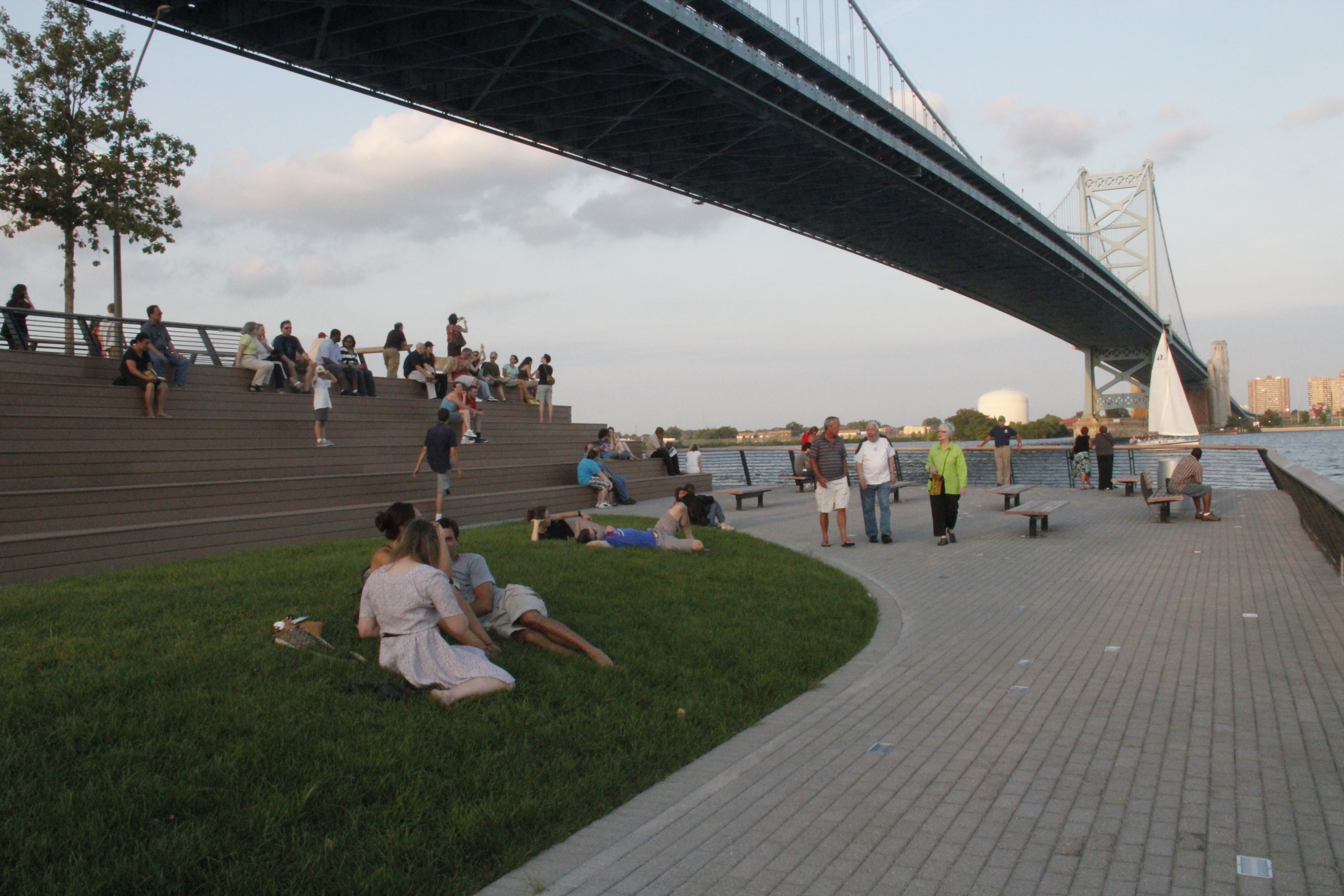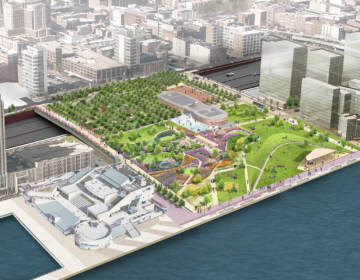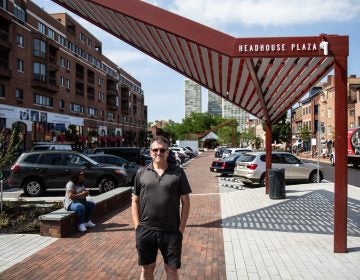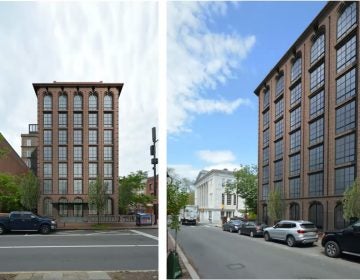Ten years later, five ways Philly should keep building on Civic Vision for Central Delaware

On this day in 2006 then-Mayor John Street signed an executive order to create a civic vision for seven miles of Philadelphia’s Delaware River waterfront. That vision, led by PennPraxis, was informed by thousands of Philadelphians who shared their hopes for what the waterfront would become. PlanPhilly was born through that visioning process and has covered Philadelphia planning, development, transportation, and design news ever since. To mark the anniversary of the executive order that jumpstarted this new day for planning in Philadelphia, former PennPraxis director Harris Steinberg offers an appraisal of the work so far, lessons from the process, and what the city still must do to realize the vision for a 21st century urban waterfront that aims to balance development, natural systems, waterfront access, and public amenities.
Ten years is a short time in the life of a city, especially one as historic as Philadelphia. But for me, today is cause for celebration and reflection: It’s been 10 years since John Street signed a mayoral executive order to commission a Civic Vision for the Central Delaware waterfront. In 2006, the Central Delaware (Allegheny Ave. to Oregon Ave.) was buffeted by over twenty high-rise proposals and the prospect of two casinos, all auto-oriented, and without the benefit of a master plan to guide development. What commenced was an inspiring process for both its organizers and participants, where citizens, civic leaders, city and state officials and developers were able to find common ground and set long-term goals for what the Delaware waterfront would be. I could fill this column with details, but, fortunately, PlanPhilly, founded at the same time as the process to provide all-important transparency to every meeting, covered it all with aplomb.
So instead of looking back, I’d prefer to look forward to how we can use the principles set forth in the Vision to help shape the waterfront and the city’s future. Some ideas on what we can learn and do moving forward:
1.) Let’s not make a deal: It may sound ridiculous, but the vision process was not really about the waterfront or planning – it was about building trust in the way decisions were made in Philadelphia, and most of all about raising expectations for what our city could be. Philadelphia, brought low by decades of bleeding population, had lost the audacity which had made previous big civic projects like its street grid, Fairmount Park, the Parkway, Society Hill and the Commuter Tunnel, possible. The city had stopped dreaming big, and had substituted developer-driven plans for its own aspirations, even for civic spaces like Penn’s Landing, sadly accepting any development as good development. The vision, with its signature moves – covering 1-95, remaking Columbus Blvd/Delaware Ave into an urbane boulevard with transit, and a waterfront trail punctuated with a necklace of urban parks – leapt over project-by-project nitpicking in which developers and civic associations squabbled over how to make a bad project merely palatable. Instead, the process resulted in a flexible armature that could embrace development of all scales – as long as it fit the urban form that makes Philadelphia special – walkable, human-scaled, with meaningful public access and rich connectivity from the city to the river.
The lesson here is for us to approach development with confidence, remembering that Philadelphia is a special city, and not to compromise on the values which made this so. With its recent gain in population and surge in development, Philadelphia should increasingly approach development with raised expectations, and ask for the best designs to match our unique city.
2.) The process is the product: In many ways, the planning process was more important than the end product itself. Asking citizens what they wanted to see and then methodically distilling that into a Vision, followed by an Action Plan, a Master Plan, and a zoning overlay, all with citizen input, produced a win-win situation: Citizens and developers both knew what to expect from development, and gained greater understanding and respect. The process also raised the bar for openness, transparency, and citizen engagement in the city, with PlanPhilly covering every decision made during the planning process and fostering trust and understanding at a time where fears of back-room deals were at an all-time high, even for Philadelphia. Subsequent planning processes benefited from higher expectations of citizens, positively influencing participation in the Comprehensive Plan, the Zoning Code Commission, and many other civic planning processes where citizen input shaped our city’s future. Of course it’s important to note that, even with citizen input and the best of planning intentions, we still see auto-oriented variances requested which threaten the waterfront vision.
Moving forward, we need City Council and the Zoning Board of Adjustment (where the Mayor has an opportunity to name a new chair) to make clear that they will not support variances in areas like the waterfront where a master plan exists and has been adopted by the city and zoning and remapping has recently been approved. This would show the citizens involved in the planning the respect they deserve and force developers to meet the standards we’ve set together through years of public planning.
3.) Dodge the ‘silver bullet’ solution: While the Penn’s Landing Corporation hoarded its waterfront assets hoping for a single private developer and built a reputation for corruption, its successor, the Delaware River Waterfront Corporation (DRWC), flipped the equation, creating great public spaces which invite myriad developers to create high-quality projects on the surrounding blocks. Using the principles of the Vision to create a Master Plan, DRWC has demonstrated the success of this formula with Race Street Pier, where great design embraces its waterfront location and has attracted two high-rise projects which meet the urban standards of the plan and the smart reuse of a civic building transforming a corner that was moribund just a short decade ago. This transformation took the patient alignment of interests, and should serve as a reminder for us to have equal patience for the forthcoming signature public spaces at Penn’s Landing and Spring Garden St. to yield high quality development. It will be worth the wait.
4.) Repeatedly raise the bar: When the Vision was created, the idea of extending the city’s signature street grid to the water’s edge was seen as a nuclear provocation by some members of the development community. Now developers in Center City and University City see large parcels as a liability and are creating (or reinstating) streets through them to create a public realm that looks and feels like the rest of Philadelphia (see East Market, Schuylkill Yards, uCity Square). It’s time for the city and the DRWC to ensure that the waterfront is as walkable as the rest of Philadelphia: plat the street grid to the river, showing developers unequivocally the type of development we deserve. But it’s also a reminder that what’s untenable now is commonplace tomorrow. Let’s keep pushing to put Philadelphia ahead of the curve on issues like transit, shared streets, historic preservation, and progressive development.
5.) Actions speak louder than words: The Vision meetings were rough and tumble; citizens showed up to passionately make their voices heard, and work out their differences. But they left those meetings and worked to create the master plan, zoning overlay, and community plans. The Vision process served to create a constituency for change on the waterfront, largely through the Central Delaware Advisory Group (CDAG), with ripple effects across the years. Unfortunately, some leaders like Steve Weixler, Jeff Rush, Marsha Bacal have already left us. Here’s hoping the next generation of Philadelphia’s urban leaders seize their moment, attend civic meetings, advance best practices, and work to enact regulations for a high quality public realm and private development.
In this spirit of action, you have an opportunity this week: CDAG is fighting to preserve the last intact row of federal rowhouses east of I-95, which are being considered for designation by the Historical Commission. Show your support by signing the petition, or better yet, show up at the meeting, Friday, October 14 at 9am at 1515 Arch St., 13th Floor. Here’s hoping you’re able to look back at that row ten years from now and know you made a difference for the future of the city.
WHYY is your source for fact-based, in-depth journalism and information. As a nonprofit organization, we rely on financial support from readers like you. Please give today.







